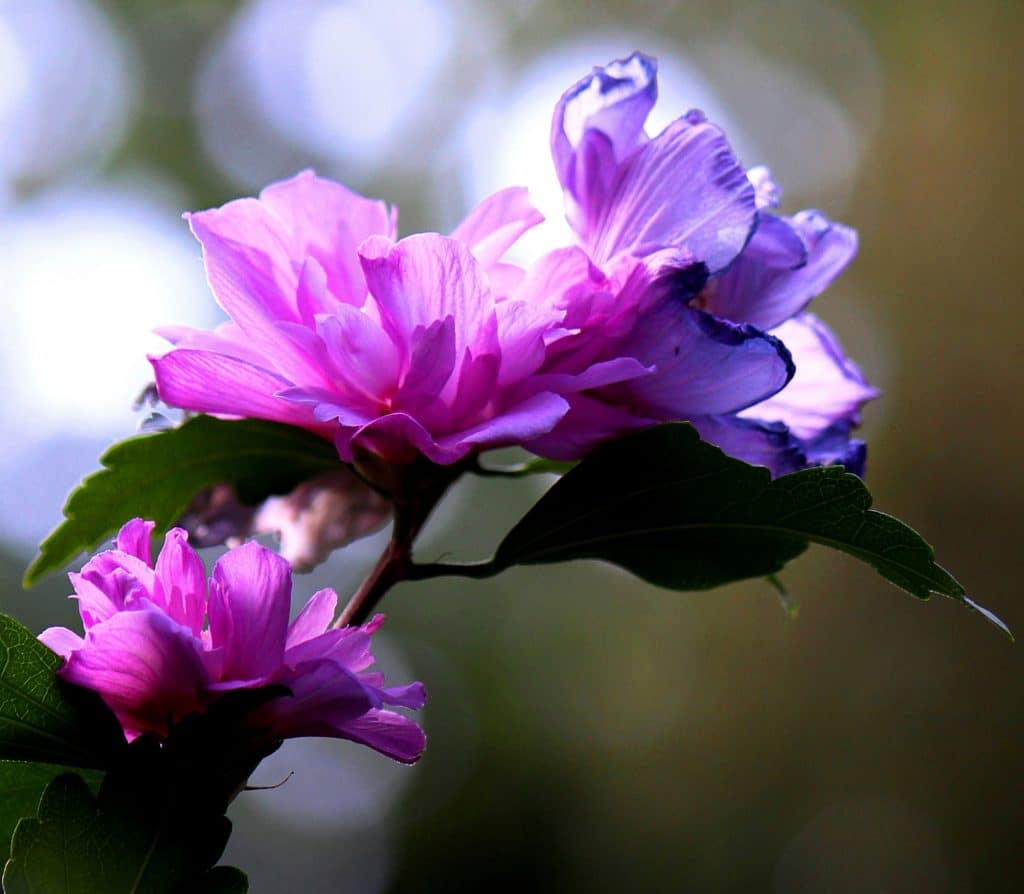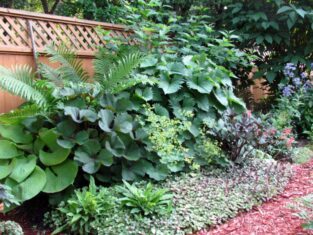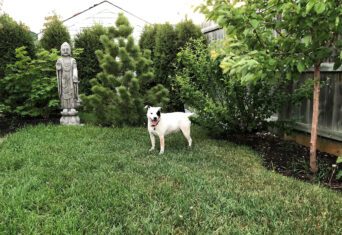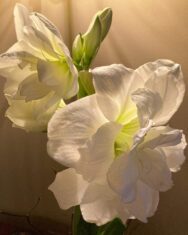
In these first weeks of September, many plants are transitioning from summer to autumn display. The grasses are sending up their feathery plumes. Hydrangea flowers are fading from creamy white to burnished pink-bronze. After several cool nights, Japanese maples are showing the first glimmers of scarlet and orange tints. But the tall rose of Sharon shrubs (Hibiscus syriacus, Zone 6) are living in complete denial, and blooming like summer is still upon them.
I like this late-flowering shrub that begins its generous flower show in mid-August and carries on flowering four to six weeks into the season when most flowering shrubs are finished. The branches carry two tones of flowers—the vibrant, freshly opened blooms each morning and the attractively faded older flower from the day before.
My two specimens (double rose-red ‘Lucy’ and double rose-purple ‘Ardens’) grow in mostly bright shade, with perhaps two hours of direct sun, but that doesn’t keep them from generous flower production. They do well in dry soil locations, growing in areas I infrequently visit with the garden hose. As long as they have a bit of pampering in the first year, with shredded leaves or compost added to their planting hole, and regular watering for their first season, they’re quick to get established.
Rose of Sharon is an old-fashioned shrub, often partnered with early-blooming lilac around the corners of farmhouses, where the early lilac and late rose of Sharon open and close the growing season. It isn’t hard to acquire older cultivars of rose of Sharon, which is generous with its seedlings and makes colonies around the mother’s skirt. Now there are dozens of sterile modern cultivars, ensuring they will remain nearly childless. Among these sterile plants you’ll find ‘Aphrodite’, pink-mauve single flowers having a dark magenta eye; ‘Diana’, profuse-blooming triploid (with extra genes), having white single flowers that remain open at night; ‘Jeanne de Arc’, with double pure white flowers; ‘Minerva, a triploid with lavender-mauve single flowers, each with a red eye; ‘Blue Bird’, with blue-lavender single flowers and dark magenta eyes; ‘Red Heart’, with white single flowers and scarlet eyes; and ‘Morning Star’, white single flowers with a red throat.
Rose of Sharon loves heat, so it will be happy in your hottest spot. It’s hardy only to minus -12°C, and in a severe winter cold snap, the branches might die back. (This has happened only once in my garden.) If you’re the gambling kind and want to experiment with rose of Sharon in Zone 5, try it in a protected location, near a warm wall on the east side of a house or heated garage. It will need about 18 inches (45 cm) of leaves piled over its roots in late autumn, and it would be wise to wrap it in two or three thicknesses of burlap. There might be loss of wood, but it will shoot new branches from low down in late spring. It would be best to try this with a smaller, less costly specimen, just in case it doesn’t survive.
Rose of Sharon often puts on two feet (60 cm) in a growing season. When mature, they can reach 10 to 12 feet (3 to 3.5 m), and require simple pruning to keep the flowers large and plentiful. If you have a tall shrub, cut the tallest canes back by one-third their height in early spring. Only minimal pruning is required for shape, as the modern shrubs have a classic upright form. Rose of Sharon is late to leaf out in spring, and sometimes won’t show any leaf buds opening until the last week of May. Keep the faith with it, and fresh green leaves will soon be evident.









I live on the north shore of Hay Bay Napanee and have been growing Rose of Sharon for !5 yrs now and their seedlings.in zone 5b……thanks for the pruning tips
Hello Judith,
I live in Ottawa, Zone 4b-5a, where Hibiscus syriacus does grow well if planted in a sunny site with well-drained soil. There are many around town, including some old ones in my own neighbourhood (not the warmer, downtown, part of town) on which I have yet to see any winter dieback. These plants are not protected by mulch or wind screens and continue to bloom profusely year after year. Two of these plants, while planted on the south side of the house, are out near a lamp post, across from a large, open sports field, and have had no problems in the almost 8 years I have lived in the neighbourhood. Saying these plants are only hardy to Zone 6 will prevent many people from trying these wonderful shrubs in Zone 5 where they typically do very well, given the right soil and location. The fact they leaf out later than many shrubs can make people think they are not hardy here but, in fact, they are. I enjoy your newsletters, please keep them coming. Perhaps you will visit Ottawa one day to see our Hibiscus yourself.
Thank you for listening,
Danielle Kennedy